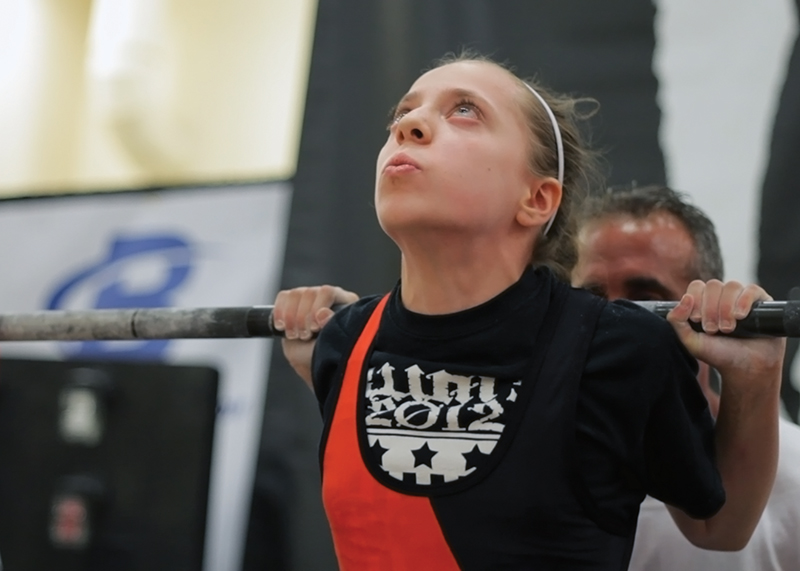Slamdance Film Review: Supergirl
Film
Supergirl
Slamdance Film Festival
Director: Jessie Auritt
Naomi Kutin is a fairly normal, Orthodox Jewish, preteen girl growing in New Jersey. The only catch: She is also a world-record-breaking powerlifter, who, at one point in the movie Supergirl, deadlifts almost three times her body weight. The documentary starts off with her at around age 10, a reasonably athletic-looking child who transforms into somewhat of a superhuman when she puts on her weightlifting belt and trains with her father, who also serves as her weightlifting coach. With the weightlifting belt off, Naomi is almost a little bit shy—the viewer watches helplessly as she reads through nasty YouTube comments with glassy eyes. She turns away, telling herself that she’s “a tough little girl,” but her self-doubt comes up again when she gets embarassed, watching videos of herself lifting as she often yells to psych herself up.
The documentary takes place over the course of about three years. The viewer gets to see as Naomi grows up, and the struggles that ensue. The most major struggle throughout the movie is that although Naomi grows significantly taller, she hovers around 97 pounds for almost 2 years, clinging onto competing in the 97-pound weight class. Having broken records at such a young age, Naomi almost completley ties her identity to her world records at first. For her, going up in a weight class increases the competition level, and as she grows taller and lankier, she doesn’t have the lower center of gravity to help her in her weightlifting. While her mother, who wants her to make her own empowered choices, lets Naomi choose what she eats, she consistently reminds Naomi that she can move up in weight class in order for her to be healthy, but Naomi refuses, not wanting to face the reality that she may no longer break the world records like she did when she was younger.
Although powerlifting makes up most of Naomi’s life, especially at first, there are glimpses into her personality and her faith that start to shape her identity as well. She giddily shows the camera her color scheme for her bat mitzvah ceremony, bright colors that also show up in the (sometimes mismatched) socks she wears when she lifts. When she and her mother go shopping for bat mitzvah dresses, she is automatically drawn to one that is a vibrant tangerine, showing her own developing style. She is protective and encouraging of her younger brother, Ari, who is on the autism spectrum and is also starting to get into powerlifting. When health issues start to threaten Naomi’s career as a powerlifter, she is forced to decide whether to drop the sport that empowers her and has made up so much of who she is as a person, or to focus on her own personal health.
Supergirl explains the world of powerlifting in a simplistic way. It shows how competitive yet supportive the weightlifting community can be. There are also glimpses into what life growing up as an Orthodox Jewish girl is like, as some of the film features Naomi in school, where she learns more about her faith and takes classes in Hebrew. Neither of these are major elements—Naomi’s personality is definitely the forefront of the movie. Both her successes and failures are emotionally wrought. She’s a tough girl who can handle the challenges she faces, but she is also still a child in many ways and can be vulnerable. The best part is watching as Naomi grows more self-assured and independent, no longer tying her identity to the world records she so easily broke at age 10, but becomes instead a 13-year-old teenager who powerlifts because it is simply what she loves to do. –Ali Shimkus
